Automatic Recognition of Vertical-Line Pulse Train from China Seismo-Electromagnetic Satellite Based on Unsupervised Clustering
Abstract
1. Introduction
2. Data Collection
3. Automatic Recognition Algorithm of VLPT
- Grayscale: The color image is converted into a grayscale image.
- Edge feature enhancement: Edge enhancement algorithms are applied to enhance the edge features of vertical lines in the grayscale image.
- Binarization: The enhanced grayscale image is converted into a binary image, where each pixel has only two values, typically black and white.
- Data dimensionality reduction: Each pixel column is treated as a recognition sample.
- Unsupervised clustering: The K-means++ clustering algorithm is used to cluster pixel columns into different clusters or categories based on their similarity.
- Automatic marking: The identified lines are automatically marked, facilitating further observation and analysis.
3.1. Grayscale
3.2. Vertical Edge Features Enhancement
3.3. Binarization
3.4. Data Dimensionality Reduction
3.5. Unsupervised Clustering
- Randomly select a data point as the first cluster center.
- For each data point, calculate the squared distance to the cluster centers already selected and use it as a weight.
- Based on distance weights, select the next cluster center with a higher probability. For each data point, normalize the weights, and then select the next cluster center probabilistically.
- Repeat steps 2 and 3 until K cluster centers are selected.
3.6. The Predetermined Number of Clusters, K
3.7. Automatic Labeling of Recognition Results
4. Experimental Setup and Results Analysis
4.1. Experimental Environment
4.2. Experimental Data
4.3. Experimental Method
4.3.1. Data Preprocessing
4.3.2. Model Training
4.3.3. Prediction
4.4. Comparative Analysis of Results from Different Experimental Methods and Conclusions
4.5. VLPTs Recognition
5. Discussion
6. Conclusions
- Further study of spectral distribution, duration, power characteristics, etc., of interference signals to enhance the ability to identify different types of interference sources. By establishing a library of interference signals, modeling and classifying signals generated by different interference sources can improve the accuracy of identification.
- Research and apply more efficient data preprocessing and noise reduction techniques to improve the quality of VLF waveform data. For example, filtering methods are used to optimize signal to noise ratio.
Author Contributions
Funding
Data Availability Statement
Acknowledgments
Conflicts of Interest
References
- Schmit, T.J.; Bedka, K. Satellite meteorology. In Encyclopedia of Remote Sensing; Springer: Cham, Switzerland, 2017; pp. 1–9. [Google Scholar]
- Raza, A.; Razzaq, A.; Mehmood, S.S.; Zou, X.; Zhang, X.; Lv, Y.; Xu, J. Study on the effects of climate change on agriculture. J. Clim. Chang. 2019, 12, 201–215. [Google Scholar]
- Hollenstein, C.; Müller, M.D.; Geiger, A.; Kahle, H.G. Crustal motion and deformation in Greece from a decade of GPS measurements, 1993–2003. Tectonophysics 2008, 449, 17–40. [Google Scholar] [CrossRef]
- Lazos, I.; Chatzipetros, A.; Pavlides, S.; Pikridas, C.; Bitharis, S. Tectonic crustal deformation of Corinth gulf, Greece, based on primary geodetic data. Acta Geodyn. Geomater. 2020, 17, 413–424. [Google Scholar] [CrossRef]
- Müller, M.D.; Geiger, A.; Kahle, H.G.; Veis, G.; Billiris, H.; Paradissis, D.; Felekis, S. Velocity and deformation fields in the North Aegean domain, Greece, and implications for fault kinematics, derived from GPS data 1993–2009. Tectonophysics 2013, 597–598, 34–49. [Google Scholar] [CrossRef]
- Jacobson, A.R. Lightning and atmospheric electricity observations in the ancient world. J. Geophys. Res. Atmos. 2015, 120, 10811–10825. [Google Scholar]
- Rodger, C.J.; Brundell, J.B.; Thomson, N.R. First results from the TARANIS satellite. Geosci. Instrum. Methods Data Syst. 2017, 6, 49–57. [Google Scholar]
- Rycroft, M.J.; Odzimek, A.; Popek, M. Terrestrial space radiation as a threat to electronic systems and passengers in passenger airplanes and experimental verification of the method of shielding from natural radiation. Aerosp. Sci. Technol. 2019, 92, 89–103. [Google Scholar]
- Zhang, D.; Li, M.; Xiong, A. Dual-effect of ionosphere on VHF Radar observations of severe thunderstorms. IEEE Geosci. Remote Sens. Lett. 2020, 17, 492–496. [Google Scholar]
- Blancard, C.; Friedland, L. (Eds.) Introduction to the Physics of Highly Charged Ions; CRC Press: Boca Raton, FL, USA, 2016. [Google Scholar]
- Stone, R.G.; Greenhouse, M.A.; Nelson, J.P. Lightning Electromagnetic Pulse Radiation (EMP). In Introduction to the Physics of Energetic Particles in the Heliosphere and Cosmic Rays; Springer: Berlin/Heidelberg, Germany, 2019; pp. 641–652. [Google Scholar]
- Carpenter, D.L.; Anderson, R.R. Radio Techniques for Probing the High-Latitude Ionospheric and Inner Magnetospheric Plasma. Rev. Geophys. 1992, 30, 283–326. [Google Scholar]
- Cohen, L. Time-Frequency Analysis: Theory and Applications; Prentice Hall: Upper Saddle River, NJ, USA, 1995. [Google Scholar]
- Boashash, B. (Ed.) Time-Frequency Signal Analysis and Processing: A Comprehensive Reference; Academic Press: Cambridge, MA, USA, 2015. [Google Scholar]
- Daubechies, I. The wavelet transform, time-frequency localization, and signal analysis. IEEE Trans. Inf. Theory 1990, 36, 961–1005. [Google Scholar] [CrossRef]
- Marple, S.L., Jr. Computing the discrete-time “analytic” signal via FFT. IEEE Trans. Signal Process. 1999, 47, 2600–2603. [Google Scholar] [CrossRef]
- Gardner, W.A.; Napolitano, A. Signal Interception: A Unifying Theoretical Framework for Feature-Based Detection and Estimation; Wiley: New York, NY, USA, 2005. [Google Scholar]
- Han, Y.; Yuan, J.; Feng, J.; Yang, D.; Huang, J.; Wang, Q.; Shen, X.; Zeren, Z. Automatic detection of “horizontal” electromagnetic wave disturbance in the data of EFD on ZH-1. Prog. Geophys. 2021, 36, 2303–2311. [Google Scholar]
- Han, Y.; Yuan, J.; Feng, J.L.; Yang, D.; Huang, J.; Wang, Q.; Shen, X.; Zeren, Z. Automatic detection of horizontal electromagnetic ave disturbance in EFD data of Zh-1 based on horizontal convolution kernel. Prog. Geophys. 2022, 37, 11–18. [Google Scholar]
- Han, Y.; Yuan, J.; Ouyang, Q.; Huang, J.; Li, Z.; Zhang, Y.; Wang, Y.; Shen, X.; Zeren, Z. Automatic Recognition of Constant Frequency Electromagnetic Disturbances Observed by the Electric Field Detector on Board the CSES. Atmosphere 2023, 14, 290. [Google Scholar] [CrossRef]
- Yuan, J.; Wang, Q.; Yang, D.H. Automatic recognition algorithm of lightning whistlers observed by the Search Coil Magnetometer onboard the Zhangheng-1 Satellite. Chin. J. Geophys. 2021, 64, 3905–3924. [Google Scholar]
- Antonopoulou, A.; Balasis, G.; Papadimitriou, C.; Boutsi, A.Z.; Rontogiannis, A.; Koutroumbas, K.; Daglis, I.A.; Giannakis, O. Convolutional Neural Networks for Automated ULF Wave Classification in Swarm Time Series. Atmosphere 2022, 13, 1488. [Google Scholar] [CrossRef]
- Lu, H.; Li, D.; He, Y.; Wang, Y.; Zhang, K.; An, Z. The China Seismo-Electromagnetic Satellite (CSES): Mission overview. Rev. Geophys. 2020, 58, e2019RG000688. [Google Scholar]
- Wang, X.; Ma, Q.; Zhang, S.; Liu, H.; Zhang, X.J.; Liu, J. The China Seismo-Electromagnetic Satellite mission. Space Sci. Rev. 2018, 214, 1–20. [Google Scholar]
- Liu, Y.; He, F.; Zhan, W.; Zhou, Q.; Xi, J.; Yuan, S. Monitoring electromagnetic field perturbations with CSES satellites around China’s 9Ms Wenchuan earthquake. J. Geophys. Res. Solid Earth 2021, 125, e2019JB018395. [Google Scholar]
- Shen, X.; Yue, X.; Li, L.; Zhang, D.; Huang, J. Observations and initial analysis of the China Seismo-Electromagnetic Satellite on earthquake-related electromagnetic disturbances. J. Geophys. Res. Solid Earth 2020, 125, e2020JB019488. [Google Scholar]
- Zhang, K.; He, Y.; Chen, B.; Xu, T.; Wang, Y.; An, Z. China Seismo-Electromagnetic Satellite detection of Landslide-induced electromagnetic excitations from the 2017 Jiuzhaigou earthquake. Geophys. Res. Lett. 2020, 47, e2020GL090646. [Google Scholar]
- Huang, J.; Chi, P.; Wang, Y.; Tang, J.; Yuan, S. The Plasma Analyzer of High-energy Particle Detector on board China Seismo-Electromagnetic Satellite and preliminary results. Chin. J. Geophys. 2019, 62, 4409–4421. [Google Scholar]
- Zhang, Z.; Yuan, S.; Liu, Z.; Liu, J. Data Processing System Design of the China Seismo-Electromagnetic Satellites (CSES). Remote Sens. 2020, 12, 2449. [Google Scholar]
- Zhou, X.; Huang, J.; Wang, Y.; Yuan, S. The Measurement Method of Plasma in Space Based on Retarding Potential Analyzer Analysis. J. Electr. Comput. Eng. 2020, 1, 1–4. [Google Scholar]
- He, Y.; Lu, H.; Lu, Z.; Yuan, S.; Zhang, K.; Zhou, Z. The Electric Field Detector (EFD) of China Seismo-Electromagnetic Satellite (CSES): Instrument Overview and In-orbit Performance. Space Sci. Rev. 2019, 215, 16. [Google Scholar]
- Verronen, P.T.; Rodger, C.J.; Clilverd, M.A.; Wang, S. First evidence of mesospheric hydroxyl response to electron precipitation from the radiation belts. J. Geophys. Res. 2011, 116, D07307. [Google Scholar] [CrossRef]
- Li, X.; Xu, Y.; An, Z.; Liang, X.; Wang, P.; Zhao, X.; Wang, H.; Lu, H.; Ma, Y.; Shen, X. The high-energy particle package onboard CSES. Radiat Detect. Technol. Methods 2019, 3, 22. [Google Scholar] [CrossRef]
- Wang, L.; Shen, X.; Zhang, Y.; Yan, R. Preliminary proposal of scientific data verification in CSES mission. Earthq. Sci. 2015, 28, 303–310. [Google Scholar] [CrossRef][Green Version]
- Liu, C.; Guan, Y.-B.; Zhang, A.-B.; Zheng, X.Z.; Sun, Y.-Q. The ionosphere measurement technology of Langmuir probe on China seismo-electromagnetic satellite. Acta Phys. Sin. 2016, 65, 189401. [Google Scholar] [CrossRef]
- Masciantonio, G. The High Energy Particle Detector for the 2nd Chinese Seismo Electromagnetic Satellite. In Proceedings of the 2019 IEEE Nuclear Science Symposium and Medical Imaging Conference (NSS/MIC), Manchester, UK, 26 October–2 November 2019; pp. 1–4. [Google Scholar] [CrossRef]
- Hou, W.; Xu, B.; Wang, H.; Li, Y.; Li, X.; Liu, D. Spatiotemporal variations of quiet time equatorial ionosphere longitudinal structure under low solar activity. J. Geophys. Res. Space Phys. 2021, 126, e2020JA028820. [Google Scholar] [CrossRef]
- Tan, P.-N.; Steinbach, M.; Karpatne, A.; Kumar, V. Introduction to Data Mining; Pearson Education: Upper Saddle River, NJ, USA, 2018. [Google Scholar]
- Hartigan, J.A.; Wong, M.A. Algorithm AS 136: A k-means clustering algorithm. J. R. Stat. Soc. Ser. C (Appl. Stat.) 1979, 28, 100–108. [Google Scholar] [CrossRef]
- Everitt, B.S.; Landau, S.; Leese, M.; Stahl, D. Hierarchical Clustering. In Cluster Analysis, 5th ed.; Wiley Series in Probability and Statistics; John Wiley & Sons, Ltd.: London, UK, 2011; pp. 27–82. [Google Scholar]
- Ester, M.; Kriegel, H.-P.; Sander, J.; Xu, X. A Density-Based Algorithm for Discovering Clusters in Large Spatial Databases with Noise. In Proceedings of the Second International Conference on Knowledge Discovery and Data Mining, Portland, OR, USA, 2–4 August 1996; pp. 226–231. [Google Scholar]
- von Luxburg, U. A Tutorial on Spectral Clustering. Stat. Comput. 2007, 17, 395–441. [Google Scholar] [CrossRef]
- Yun, Z.; Liu, S. Pulse signal analysis and identification based on multi-scale morphological component analysis. J. Appl. Geophys. 2020, 177, 104134. [Google Scholar]
- Chaudhary, V.; Naik, G.R. A review on pulse signal analysis and its applications. J. Signal Process. Syst. 2018, 90, 1147–1163. [Google Scholar]
- Zhou, Y.; Li, H. Pulse signal classification based on wavelet packet transform and support vector machine. J. Phys. Conf. Ser. 2017, 839, 042033. [Google Scholar]
- Zhang, W.; Wang, Z. Pulse signal classification based on wavelet analysis and neural network. J. Phys. Conf. Ser. 2015, 641, 012020. [Google Scholar]
- Zhang, Y.; Li, Y.; Wang, Y. Pulse signal classification based on mathematical morphology and extreme learning machine. J. Phys. Conf. Ser. 2019, 1146, 032023. [Google Scholar]
- Li, Y.; Zhang, Y.; Wang, Y. Pulse signal classification based on mathematical morphology and random forest. J. Phys. Conf. Ser. 2018, 964, 012024. [Google Scholar]
- Liu, Y.; Wang, Y. Pulse signal classification based on deep learning. J. Phys. Conf. Ser. 2019, 1146, 032024. [Google Scholar]
- Zhang, X.; Li, Y. Pulse signal classification based on extreme learning machine and wavelet packet transform. J. Phys. Conf. Ser. 2017, 839, 042034. [Google Scholar]
- Liu, S.; Sun, J.; Ni, Q. A feature extraction framework for underwater pulse signal based on morphology and wavelet packet transform. Sensors 2019, 19, 1645. [Google Scholar]
- Ure, J.S.; Maynard, O.E. Parameter estimation for time-domain characterization of ultra-wideband electromagnetic pulses. IEEE Trans. Electromagn. Compat. 2013, 55, 1076–1086. [Google Scholar]
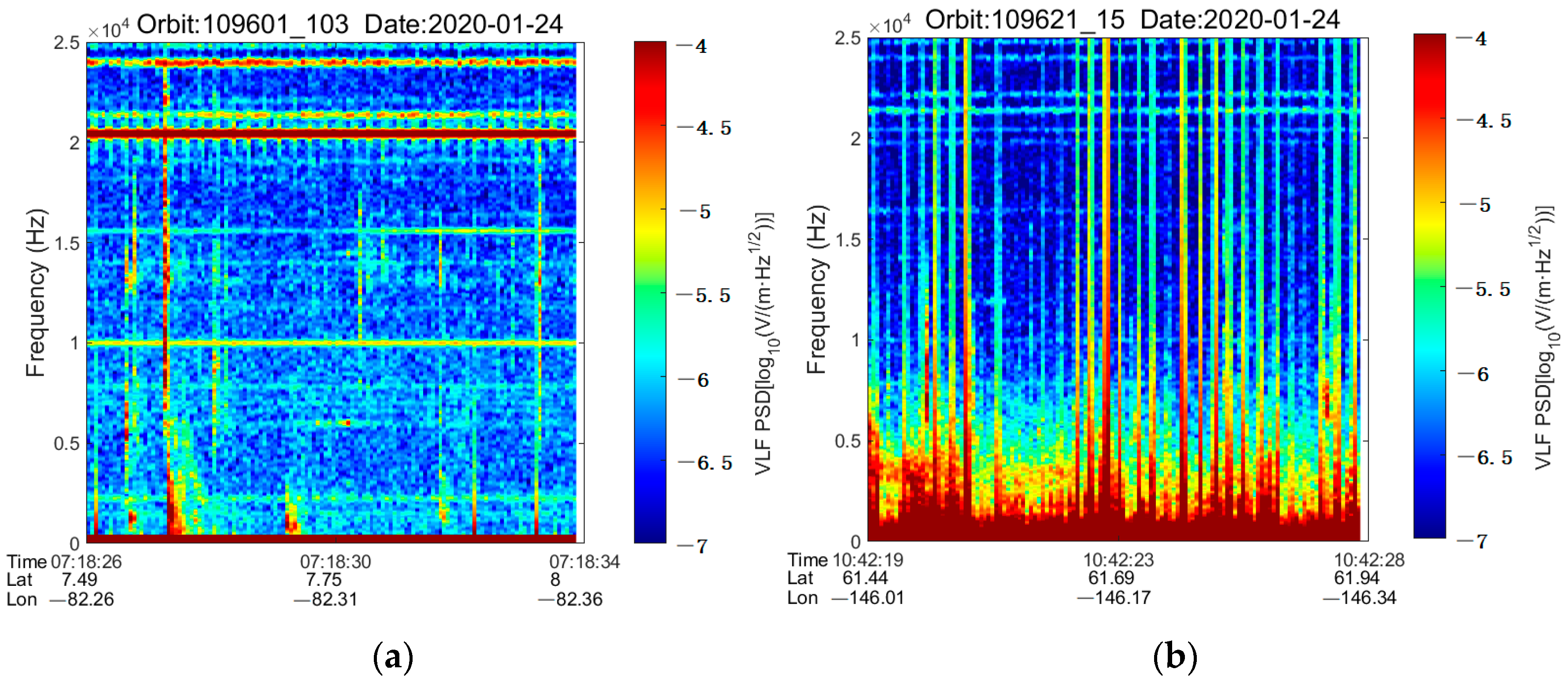



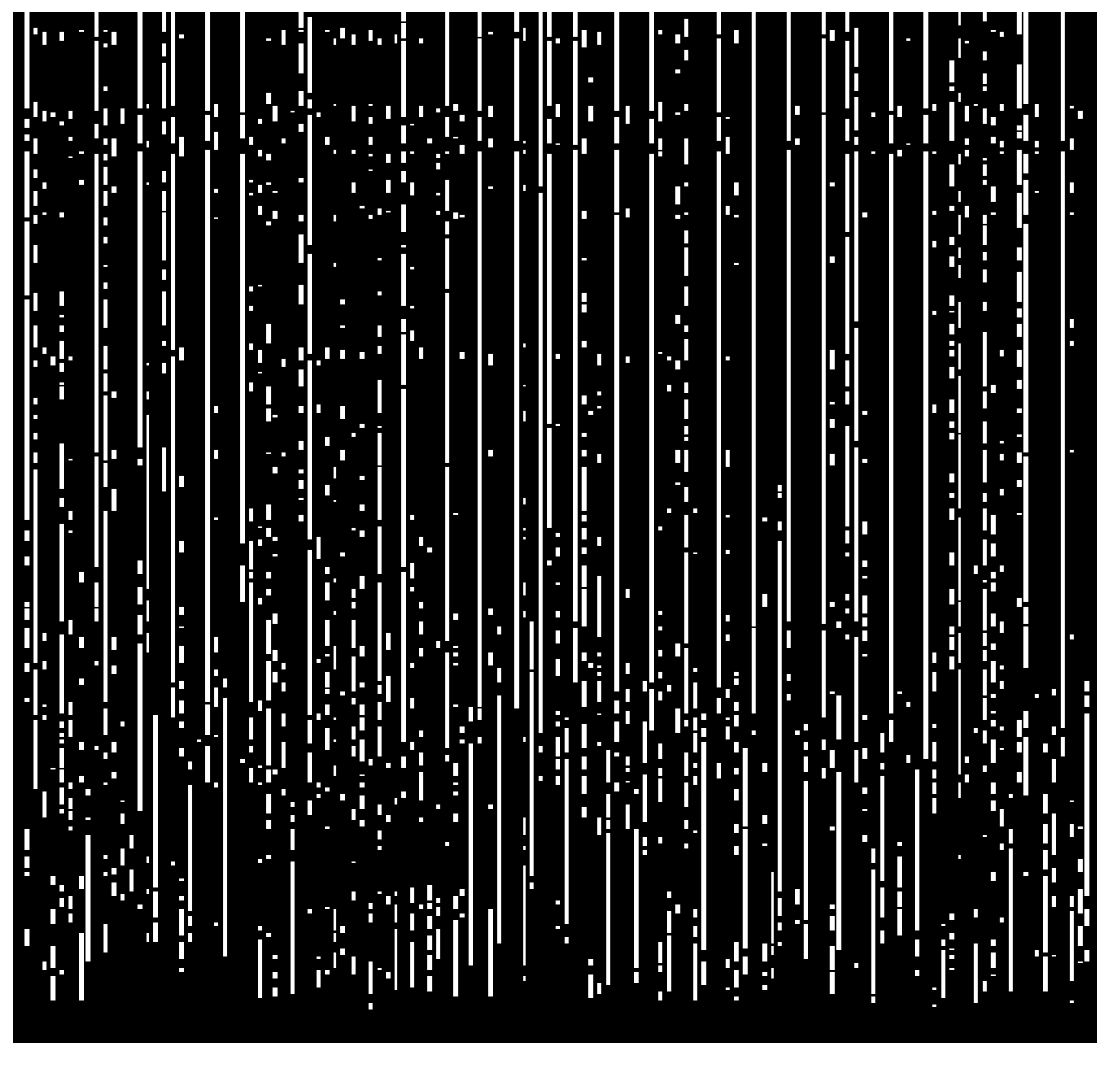
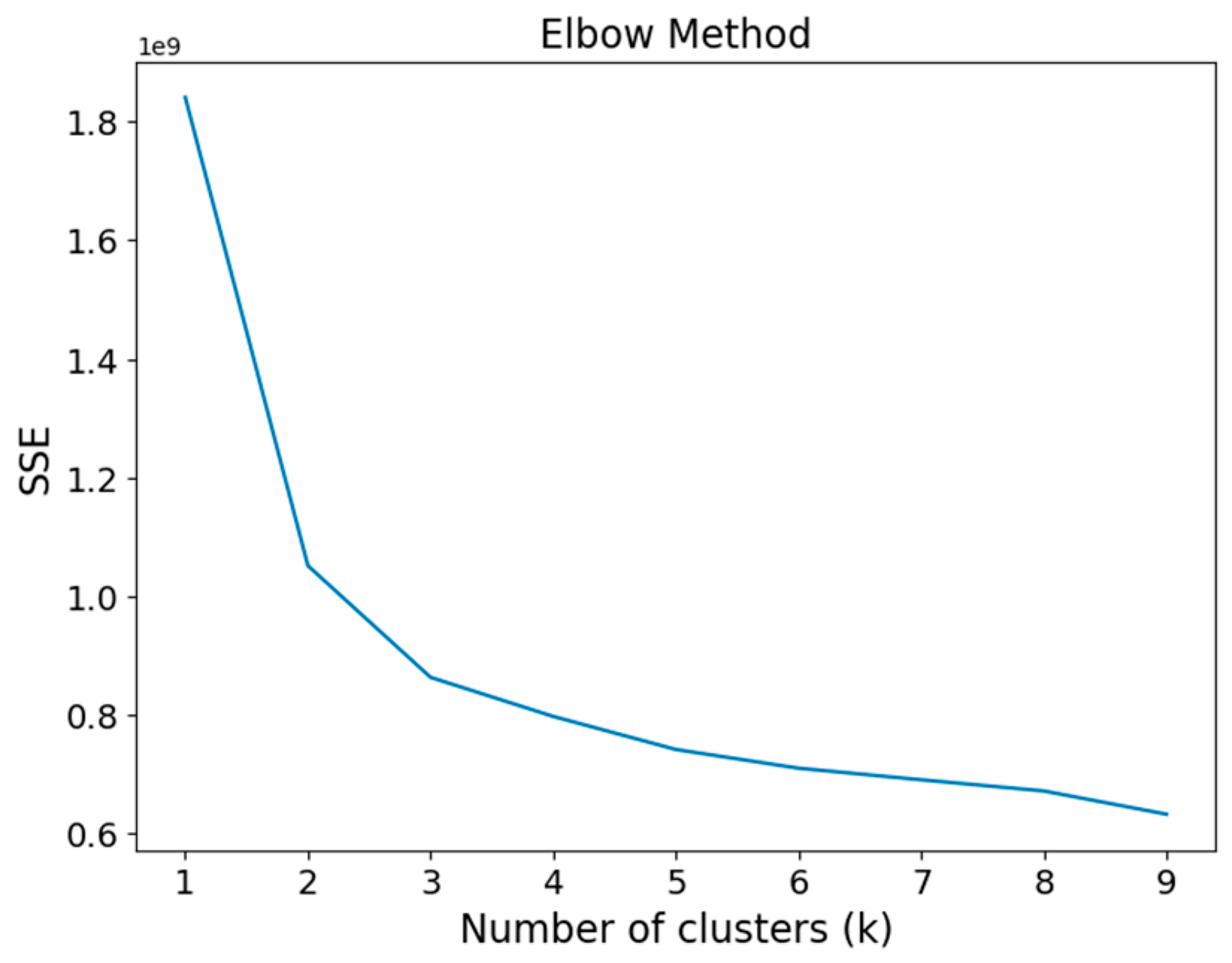
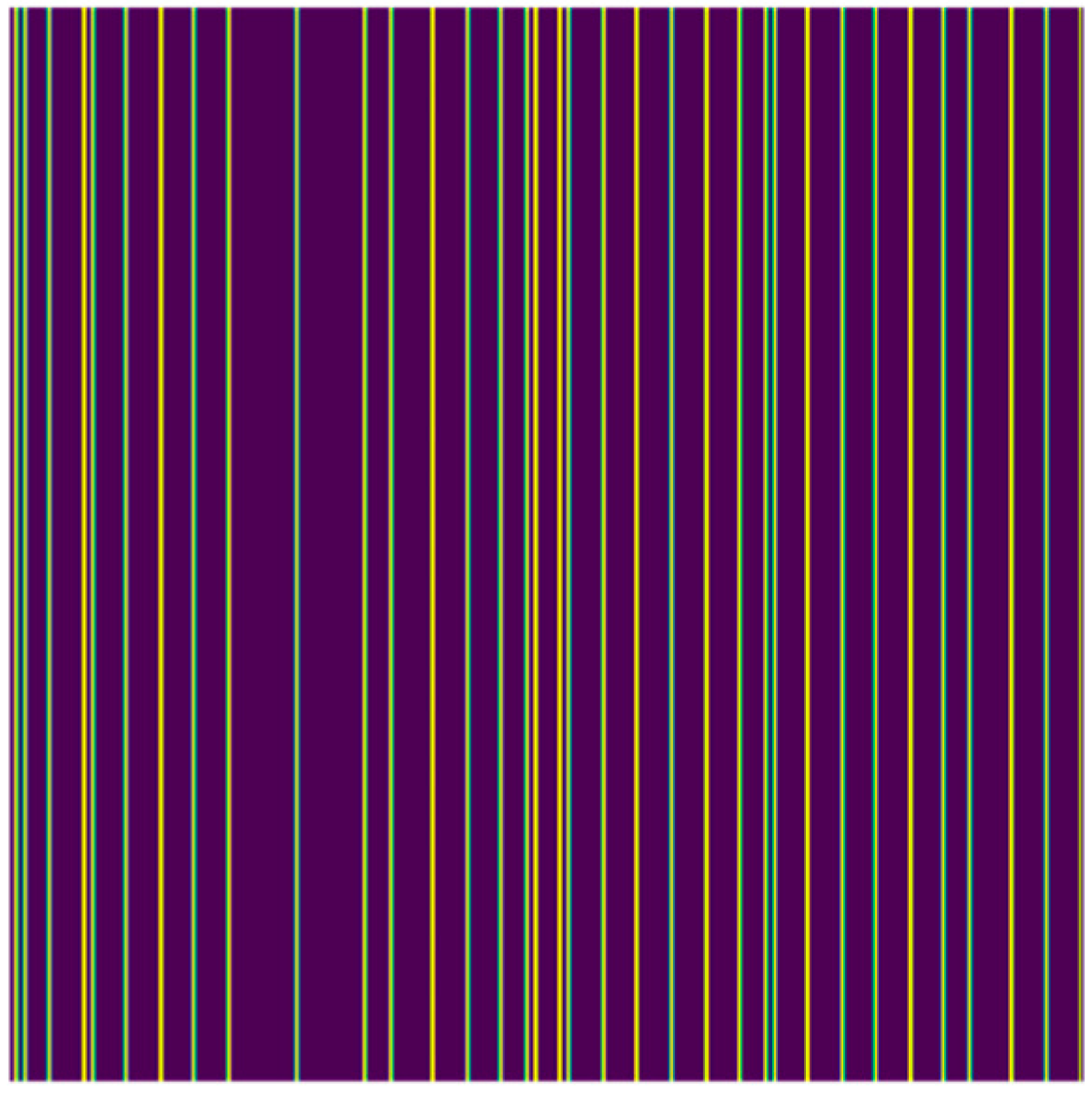
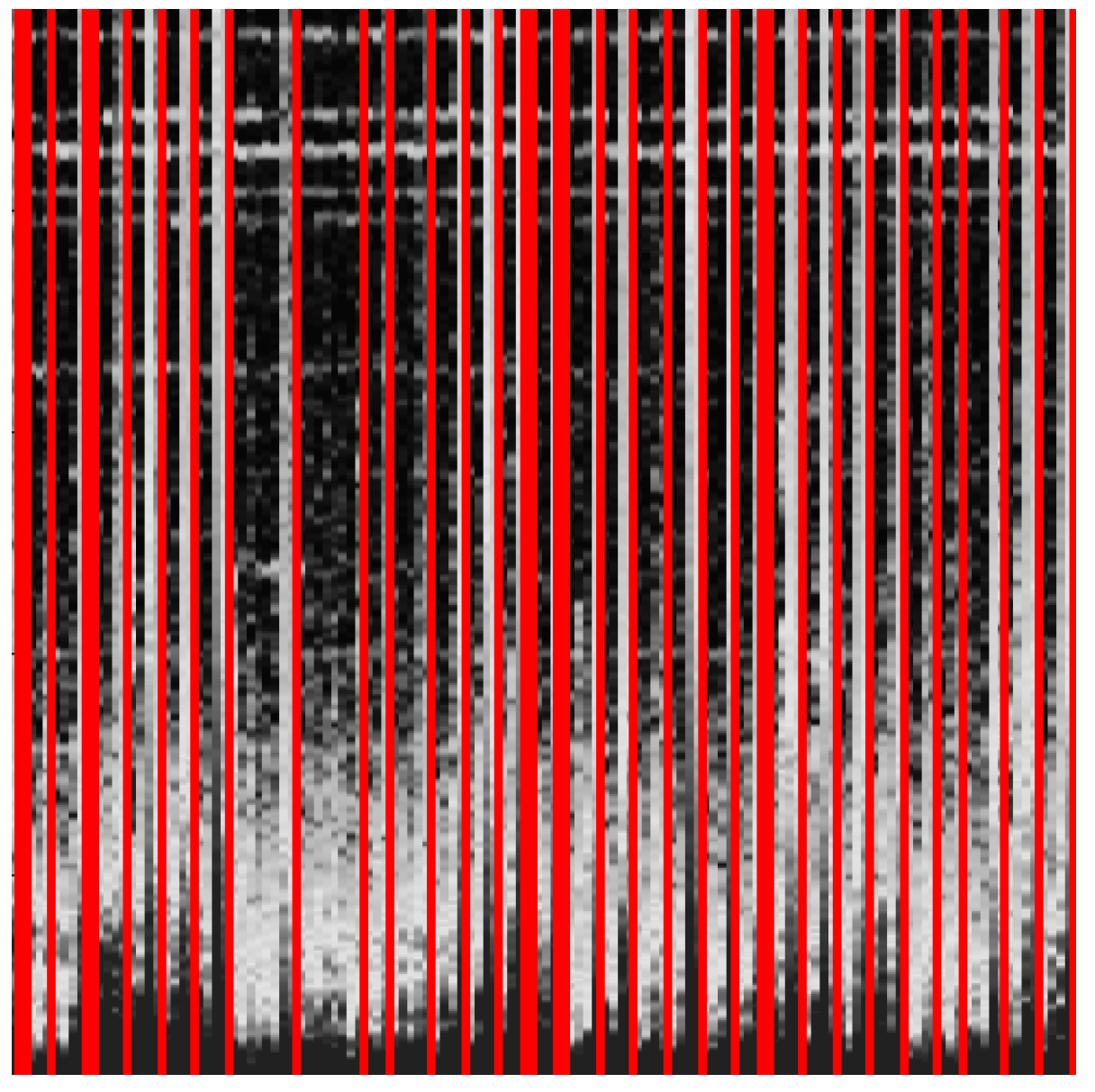

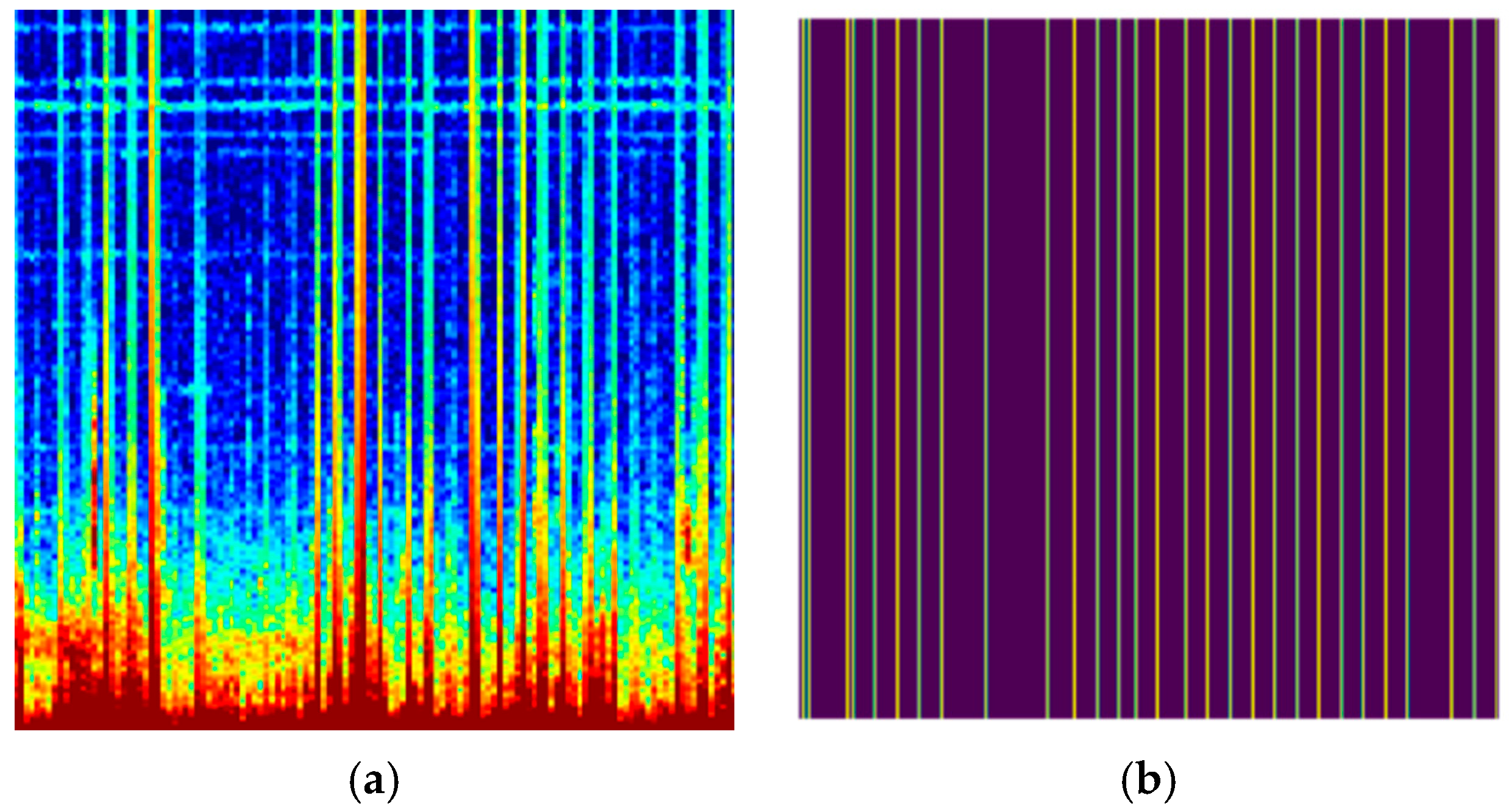



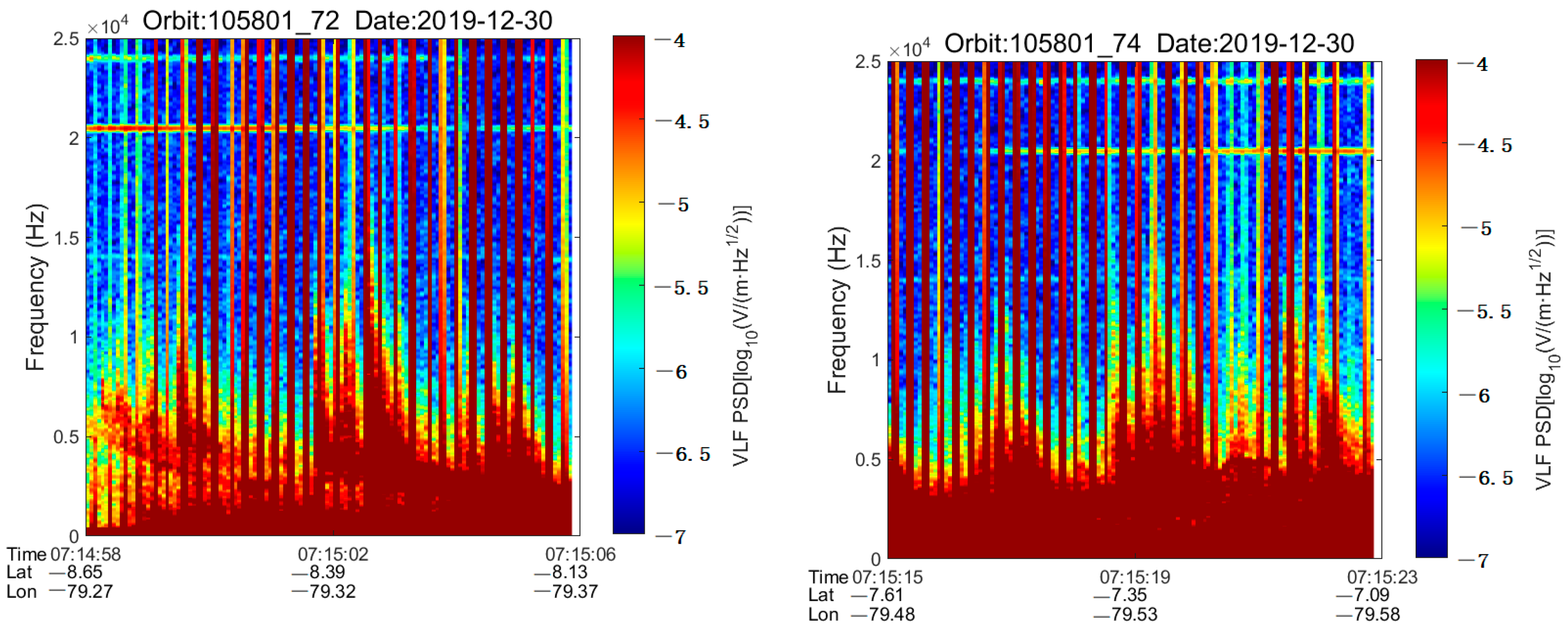

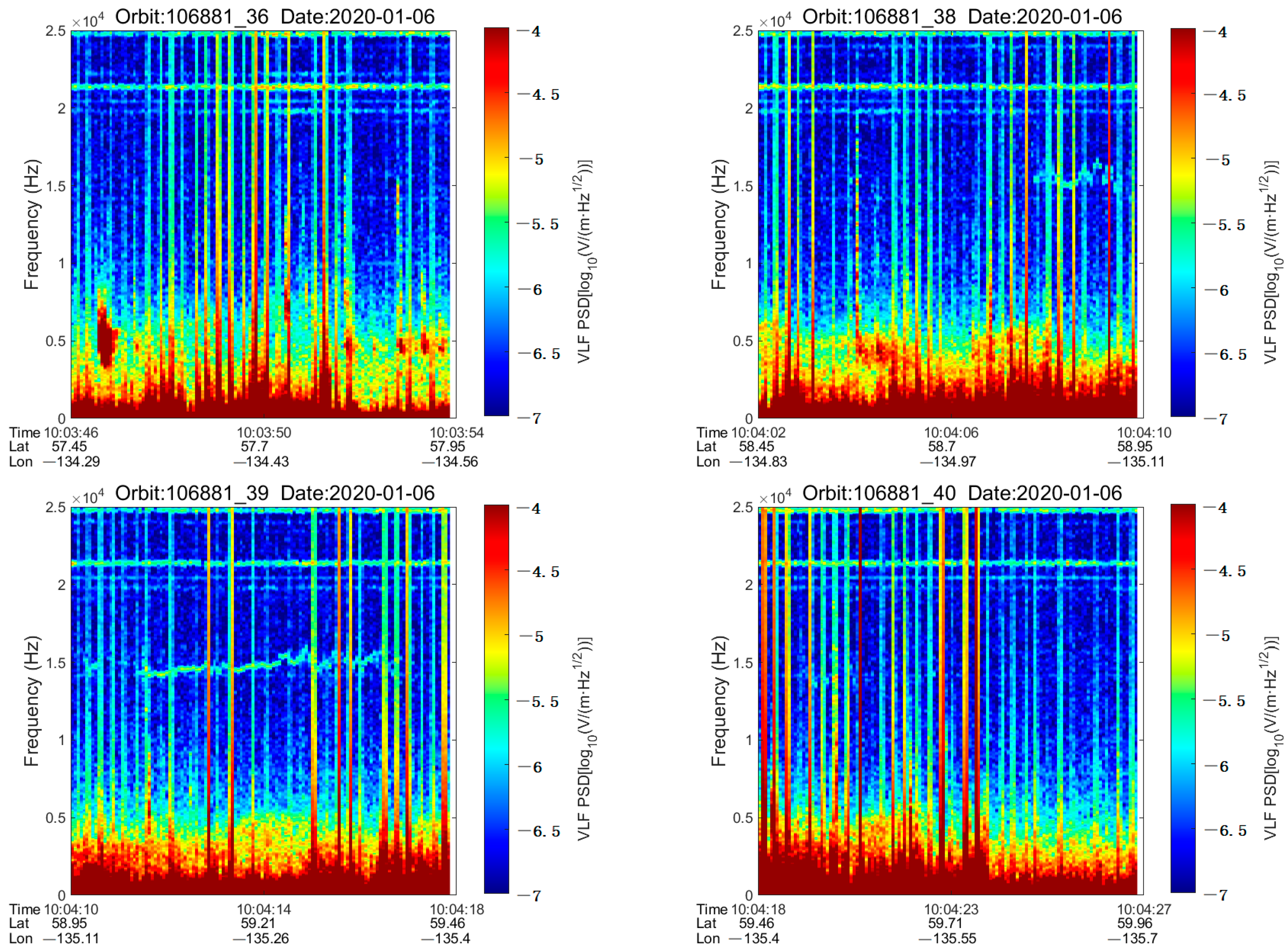

| Spectral Clustering | K-Means++ | |
|---|---|---|
| Accuracy (%) | 0.96 ± 0.01 | 0.98 ± 0.01 |
| Missed Detection Rate (%) | 0.04 ± 0.01 | 0.02 ± 0.01 |
| Error Rate (%) | 0 | 0 |
| Time (s/per image) | 0.042 | 0.013 |
Disclaimer/Publisher’s Note: The statements, opinions and data contained in all publications are solely those of the individual author(s) and contributor(s) and not of MDPI and/or the editor(s). MDPI and/or the editor(s) disclaim responsibility for any injury to people or property resulting from any ideas, methods, instructions or products referred to in the content. |
© 2023 by the authors. Licensee MDPI, Basel, Switzerland. This article is an open access article distributed under the terms and conditions of the Creative Commons Attribution (CC BY) license (https://creativecommons.org/licenses/by/4.0/).
Share and Cite
Han, Y.; Li, Y.; Yuan, J.; Huang, J.; Shen, X.; Li, Z.; Ma, L.; Zhang, Y.; Chen, X.; Wang, Y. Automatic Recognition of Vertical-Line Pulse Train from China Seismo-Electromagnetic Satellite Based on Unsupervised Clustering. Atmosphere 2023, 14, 1296. https://doi.org/10.3390/atmos14081296
Han Y, Li Y, Yuan J, Huang J, Shen X, Li Z, Ma L, Zhang Y, Chen X, Wang Y. Automatic Recognition of Vertical-Line Pulse Train from China Seismo-Electromagnetic Satellite Based on Unsupervised Clustering. Atmosphere. 2023; 14(8):1296. https://doi.org/10.3390/atmos14081296
Chicago/Turabian StyleHan, Ying, Yalan Li, Jing Yuan, Jianping Huang, Xuhui Shen, Zhong Li, Li Ma, Yanxia Zhang, Xinfang Chen, and Yali Wang. 2023. "Automatic Recognition of Vertical-Line Pulse Train from China Seismo-Electromagnetic Satellite Based on Unsupervised Clustering" Atmosphere 14, no. 8: 1296. https://doi.org/10.3390/atmos14081296
APA StyleHan, Y., Li, Y., Yuan, J., Huang, J., Shen, X., Li, Z., Ma, L., Zhang, Y., Chen, X., & Wang, Y. (2023). Automatic Recognition of Vertical-Line Pulse Train from China Seismo-Electromagnetic Satellite Based on Unsupervised Clustering. Atmosphere, 14(8), 1296. https://doi.org/10.3390/atmos14081296






